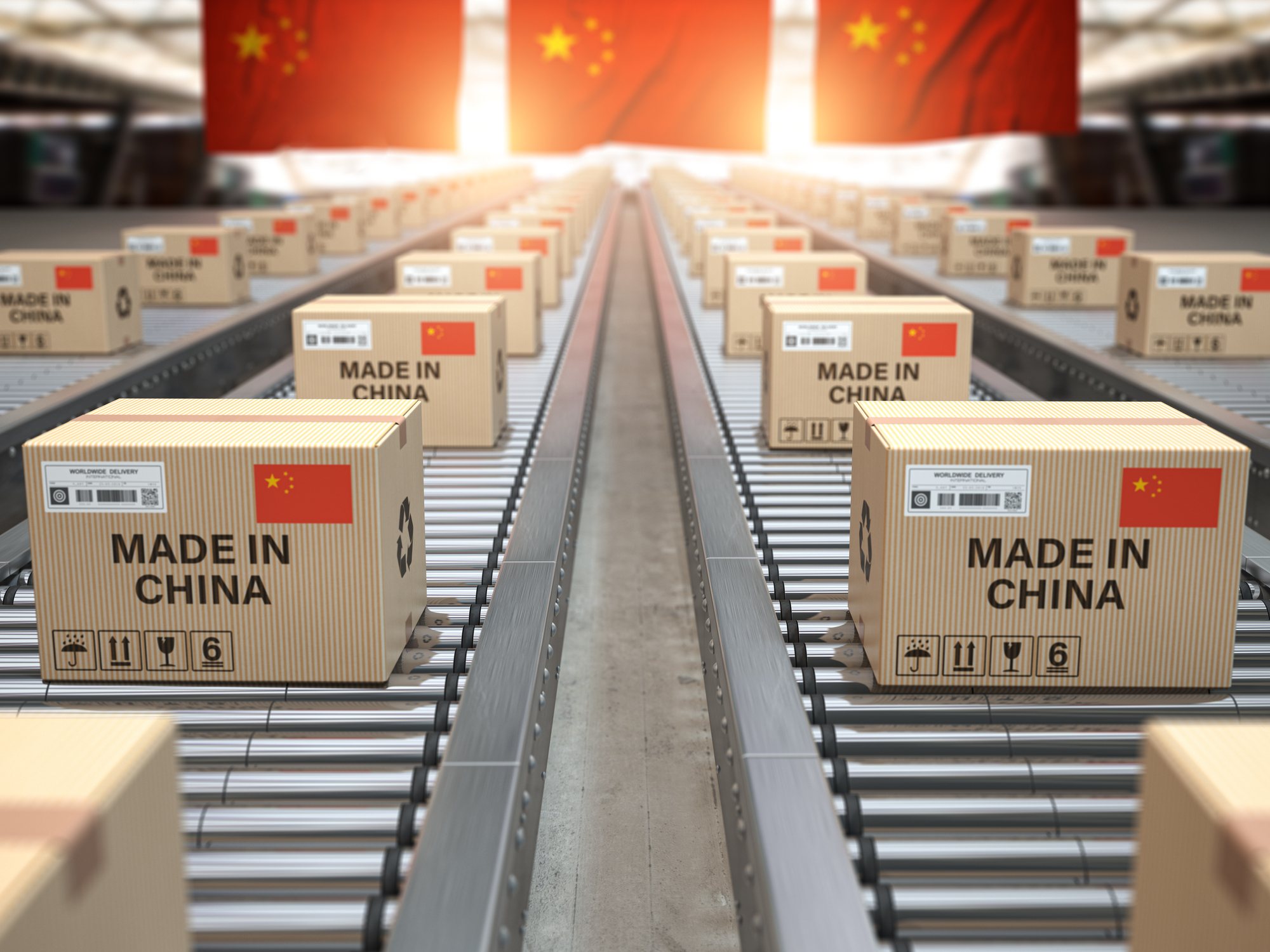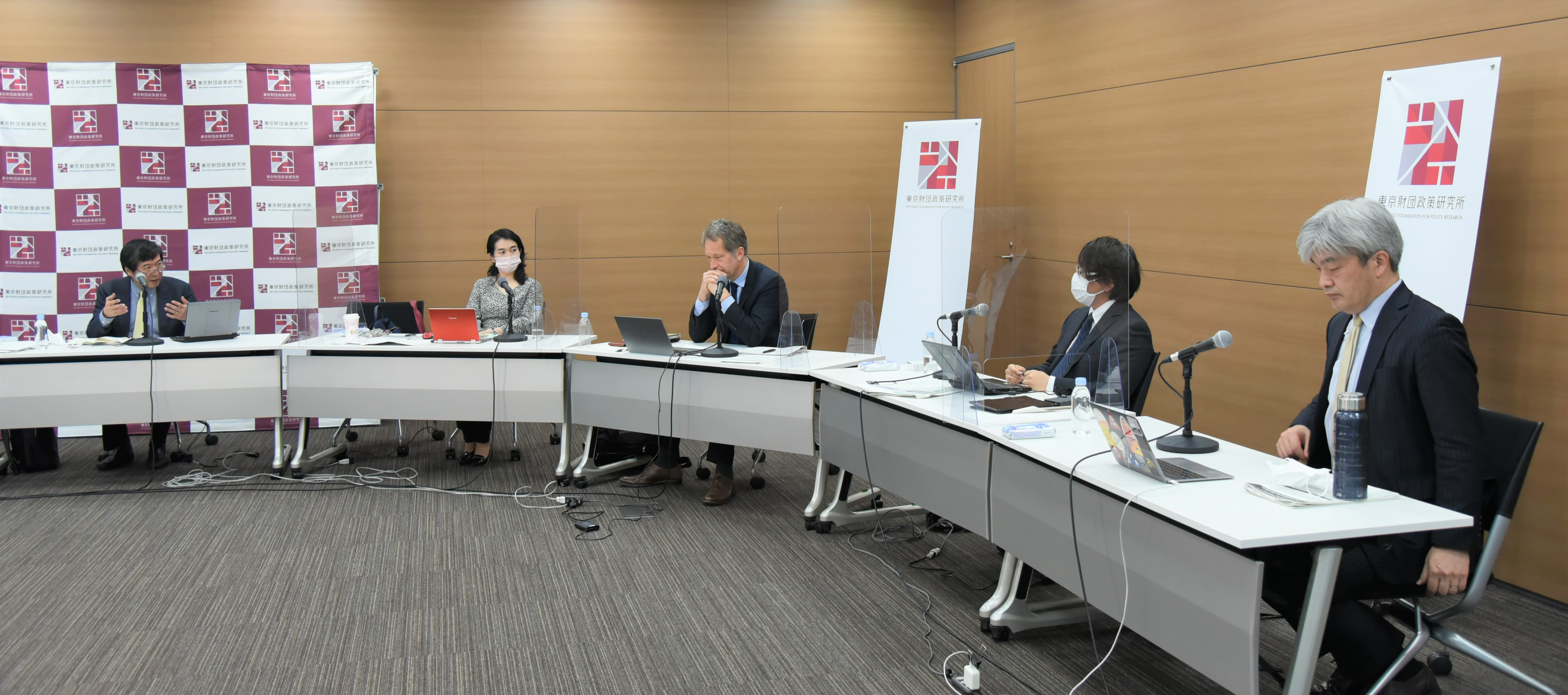
A Strategic-Management Perspective on Science and Technology Policy
April 14, 2023
R-2022-143E
The author applies lessons from strategic management theory to better understand the favorable and unfavorable conditions for the successful transfer of other countries’ technology and innovation policies.
* * *
To Imitate or Not to Imitate?
Science, technology, and innovation policy can have significant direct and indirect impacts on a nation’s industrial competitiveness. Indeed, in many cases such policies function as part of a national strategy for boosting the competitiveness of domestic industry. Partly for this reason, policy makers frequently study what other countries have been doing in these areas and choose a model policy to either imitate or adopt with modifications. Yet this practice raises certain strategic issues.
According to strategic management theory, companies typically gain a competitive advantage either through differentiation or through cost leadership. Imitation tends to close off avenues for differentiation. Unless one can secure a cost advantage, might it not hinder competitiveness?
In the following, after reviewing the factors driving policy imitation, I attempt to identify the circumstances in which imitation of STI policies might be desirable, drawing from previous work in strategic management as well as comparative policy studies. Empirical research on this particular topic being quite limited, my purpose here is to consider the outcomes that might be predicted theoretically and present my conclusions as hypotheses for further study.
Factors Behind Policy Transfer and Convergence
It is not uncommon for governments to adopt policies that are either the same as or somewhat modified from those of other countries. Political scientists use the terms “policy transfer” (Dolowitz and Marsh 1996) and “policy convergence” (Bennett 1991) when referring to this phenomenon. A classic example was the regional spread of Japan’s industrial policies of the 1960s, 1970s, and 1980s in East Asian countries (Ikenberry 1990). Another example was Europe’s adoption of the US framework for biosecurity regulation from the 1980s through the 2000s (McLeish and Nightingale 2007).
A number of factors have been adduced to explain the phenomenon of international policy transfer. Foremost among these are (1) learning by policy-making organs, (2) the “bandwagon effect” (a tendency to emulate policies of neighbors or rivals for fear of being left behind), and (3) direct or indirect coercion stemming from unequal power relationships (Evans 2019).
The bandwagon effect (factor 2) is seen as a major factor driving the aforementioned spread of Japan’s industrial policy to other countries in East Asia (Ikenberry 1990). In the case of biosafety, Europe had little choice but to adopt US-style regulations if it wanted to facilitate joint research with US institutions at a time when American research was in the ascendant. This suggests that power relationships (factor 3) played a role (McLeish and Nightingale 2007).
Generally speaking, however, most policy transfer seems to be the result of policy learning (Evans 2019). It is common practice for policy-making entities to survey the international community in search of optimal policy options. That suggests that there is a positive side to the phenomenon of policy transfer.
Factors in the Transfer of STI Policy
How, then, might learning function in the transfer of STI policy? To begin to answer this question, we must break policy down into its three constituent levels.
Public policy can be thought of as a three-tiered hierarchy comprising (from top to bottom) the policy, program, and project levels. The policy level involves the identification of a problem (agenda setting) and formulation of a basic strategy for mobilizing resources to address it. Policy at this level is codified in “strategies,” “initiatives,” and “basic plans” drawn up and released by the government. At the program level, policy makers select the instruments (tools) for addressing the problem and delivering on the policy goals. Those instruments may be regulation, economic incentives or disincentives, or soft instruments to promote voluntary action by the private sector (Borras and Edquis 2013). At the project level, policy programs are implemented through concrete systems and processes.
Table 1. Three Levels of Policy
|
Level |
Description of Process |
|
Policy |
Identification of problem to be addressed (agenda setting) |
|
Program |
Selection of policy instruments (tools) to address the problem |
|
Project |
Implementation of program through concrete systems and processes |
Source: Compiled by the author using information from Borras and Equis (2013) and Akiyoshi, Ito, and Kitayama (2015).
A key characteristic of STI policy transfer is the growing impact of factors driving transfer at the top two levels.
At the policy level, such transfer is increasingly propelled by changes in the social context of STI research. Technological research these days is generally conducted by international networks of researchers, and innovation is implemented by networks of transnational organizations. Partly for this reason, policy makers are more likely to share a common perception of policy issues (Gulbrandsen and Etzkowitz 1999). Because values are converging internationally as well, there is also greater agreement on the desirable goals and directions for society and consequently more unanimity on the socially desirable solution to issues involving STI (Lemola 2002; Landoni 2021).[1] As a result of these trends, it is easier for policy makers in one country to learn from paradigm shifts occurring in other countries (Borras 2011).
At the program level, the need for legitimization has been cited as an important factor driving policy transfer (Weber and Rohracher 2012). In STI policy, there is often a high degree of uncertainty as to the prospects for realization and social penetration. This is particularly true of policies that target specific innovations or research and development outcomes. In such cases, people are apt to question the justification for investing public resources. Citing the precedent of another country can lend legitimacy to the policy one intends to pursue. As a result, one can often accelerate implementation by adopting programs similar to those in effect elsewhere.
One might also expect the bandwagon effect to thrive under these conditions. Many STI programs have a direct or indirect effect on a country’s competitiveness. The fear of falling behind other countries could generate social and political pressure to adopt the same programs rivals have instituted, thus promoting policy transfer.
Table 2. Level-Specific Factors with a Potential to Drive Policy Transfer in Technology and Innovation Policy
|
Level |
Factors Promoting Transfer |
|
Policy |
Learning of the existence of a paradigm shift linked to social change Background factors: Existence of transnational innovation systems, international convergence of social needs |
|
Program |
Need to legitimize programs with highly uncertain prospects for success Background factors: “Bandwagon effect” stemming from fear of falling behind rivals |
Source: Compiled by the author using information from Borras (2011).
Expected Consequences from a Strategic Management Perspective
The transfer of business strategy is a well-documented phenomenon, generally construed as “imitation” in the context of strategic management theory. According to Deephouse (1999), when the future of a particular business is uncertain, the strategy adopted by a majority of companies soon takes on an aura of legitimacy and becomes the object of imitation. This pattern is similar in some respects to that seen in the transfer of STI policy.
Lieberman and Asaba (2006) divide strategic imitation into information-based and rivalry-based imitation. The first type is driven by a belief that a successful company has superior information; the second, by fear of losing out to rivals. Table 3 summarizes observed consequences of these two types of transfers.
Table 3. Impact of Strategic Imitation
|
Type of Imitation |
Positive Impact |
Negative Impact |
|
Information-based (driven by perception that model has superior information) |
|
Strategy transfer may fail if the imitator lacks sufficient resources for implementation. |
|
Rivalry-based (driven by fear of falling behind rivals) |
In winner-takes-all environments, strategic imitation tends to increase intensity of competition (a plus for society but a minus for participating companies). In other situations, imitation can result in stable coexistence (division of labor) within the market (a plus for participating companies). |
|
|
Both types |
If a pioneer has chosen a productive strategy, imitation can improve the productivity of the industry as a whole. If adoption of pioneer’s strategy with modifications promotes complementarities, social benefits increase. |
If the strategy turns out to have been wrong, society bears the cost of wasted investment. Imitation limits exploration of other possibilities. |
Source: Compiled by author using information from Lieberman and Asaba (2006).
Let us suppose that the same principles apply to the transfer of STI policies (Table 4). At the policy level, the adoption of identical or similar policy agendas might accelerate the resolution of the issues targeted. On the other hand, from an international standpoint, when multiple countries are addressing the same issues and adopting overlapping programs, investments are bound to be duplicated. Moreover, even if the policy challenge is a valid one, no technology or innovation policy can be considered strategically advantageous if a country lacks the resources (knowledge, personnel, etc.) to implement it. In that case, it will not lead to greater competitiveness.
At the program level, the outcome will depend on the circumstances, including the similarities and differences between conditions in the countries involved. If a program has been effective for an early mover, policy transfer may be effective, providing the latecomer has an environment conducive to the effective implementation of that same program. By selecting programs that bring about results complementary to those in the pioneering country, the imitating country can not only accelerate the resolution of social problems but also promote a kind of international division of labor, which may boost its own competitiveness. On the other hand, just as at the policy level, there are concerns about duplicative investment. Moreover, in the case of close imitation in particular, industry may refuse to commit to a new policy if it seems likely to increase competition, except perhaps in winner-takes-all cases.
Table 4. Expected Effects of Policy Transfer by Inference from Strategic Imitation Studies
|
Level |
Expected Positive Impacts |
Expected Negative Impacts |
|
Policy |
Resolution of targeted social issues can be accelerated. |
Investment duplicated internationally. Competitiveness will not rise if internal resources needed for implementation are not adequately considered. |
|
Program |
Programs can be successfully transferred if environments are similar (or if programs are adjusted with differences in mind). Social problems may be resolved quickly and competitiveness enhanced if latecomers implement programs that are complementary to those of early movers. |
Investment duplicated internationally. Industry may resist policy transfer in cases where it promises to intensify competition. |
Source: Compiled by the author using information from Lieberman and Asaba (2006).
Implications for Policy Making
As I indicated at the outset, it is a mistake to dismiss a policy because of its derivative or imitative aspect. By combining strategic management arguments with those in the political science, we can identify the favorable and unfavorable conditions for policy transfer and imitation.
All of the studies cited above point to the need for a compatible and supportive environment in the borrowing country. Although duplicative investment has been noted as a negative impact, this is not a criticism that usually comes up in the context of international competition. That being the case, the pivotal questions are whether policy makers have adequately assessed the compatibility of their own countries’ resources (intellectual and human) and whether they have fully analyzed the conditions for effective implementation of the programs in question.
Borras (2011) has emphasized the importance of organizational capacities for policy learning leading to effective policy transfer. Identifying the ways in which policy transfer can lead to policy failure, Dolowitz and Marsh (2000) cite (1) uninformed transfer, in which the imitating country has insufficient information or understanding of the model policy, (2) incomplete transfer, in which important elements of the policy are omitted, and (3) inappropriate transfer, the result of differences in the cultural, political, or other context. Each of these can be traced to inadequate study and analysis by the responsible policy-making organs.
In short, it is not sufficient to study other countries’ policies and imitate them in order to justify one’s own strategies. Policy makers need to carefully analyze the conditions for a policy or program’s success and logically consider whether the same policy or program is likely to succeed in their own country.
References
Akiyoshi, T., S. Ito, and T. Kitayama, eds. 2015. Kokyo seisaku gaku no kiso (Foundations of Policy Studies). 2nd ed. Yuhikaku Publishing Co.
Bennett, C.J. 1991. “What Is Policy Convergence and What Causes It?” British Journal of Political Science 21 (2): 215–33.
Borrás, S. 2011. “Policy Learning and Organizational Capacities in Innovation Policies.” Science and Public Policy 38 (9): 725–34.
Borrás, S., and C. Edquist. 2013. “The Choice of Innovation Policy Instruments.” Technological Forecasting and Social Change 80 (8): 1513–22.
Deephouse, D.L. 1999. “To Be Different, or to Be the Same? It’s a Question (and Theory) of Strategic Balance.” Strategic Management Journal 20 (2): 147–66.
Dolowitz, D.P., and D. Marsh. 1996. “Who Learns What from Whom: A Review of the Policy Transfer Literature.” Political Studies 44 (2): 343–57.
Dolowitz, D.P., and D. Marsh. 2000. “Learning from Abroad: The Role of Policy Transfer in Contemporary Policy-Making.” Governance 13 (1): 5–23.
Evans, M. 2019. “International Policy Transfer. In The Oxford Handbook of Global Policy and Transnational Administration, eds. D. Stone and K. Moloney, 94–110. Oxford University Press.
Gulbrandsen, M., and H. Etzkowitz. 1999. “Convergence between Europe and America: The Transition from Industrial to Innovation Policy.” Journal of Technology Transfer 24 (2–3): 223–33.
Ikenberry, J.G. 1990. “The International Spread of Privatisation Policies: Inducements, Learning and ‘Policy Bandwagoning.’” In The Political Economy of Public Sector Reform and Privatization, eds. E. Suleiman and J. Waterbury, 88–110. Westview Press.
Landoni, M. 2019. “Convergence of Innovation Policies in the European Aerospace Industry (1960–2000).” Technological Forecasting and Social Change 147: 174–84.
Lemola, T. 2002. “Convergence of National Science and Technology Policies: The Case of Finland.” Research Policy 31 (8–9): 1481–90.
Lieberman, M.B., and S. Asaba. 2006. “Why Do Firms Imitate Each Other?” Academy of Management Review 31 (2), 366–85.
McLeish, C., and P. Nightingale. 2007. “Biosecurity, Bioterrorism and the Governance of Science: The Increasing Convergence of Science and Security Policy.” Research Policy 36 (10): 1635–54.
Mustar, P., and M. Wright. “Convergence or Path Dependency in Policies to Foster the Creation of University Spin-off Firms? A Comparison of France and the United Kingdom.” Journal of Technology Transfer 35 (1): 42–65.
Weber, K.M., and M. Rohracher. 2012. “Legitimizing Research, Technology and Innovation Policies for Transformative Change: Combining Insights from Innovation Systems and Multi-level Perspective in a Comprehensive ‘Failures’ Framework.” Research Policy 41 (6): 1037–47.
[1] When the society’s goals differ, policy transfer and convergence are impeded. For example, Mustar and Wright (2010) cite differences in society’s expectations of universities to explain the lack of convergence between British and French policies to commercialize technology created by universities.
















